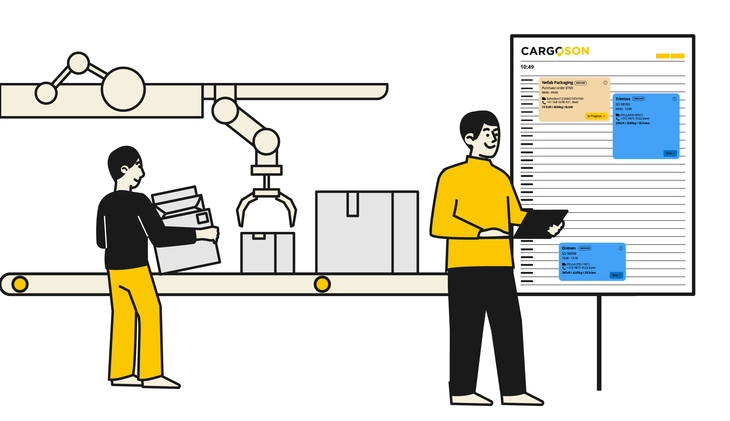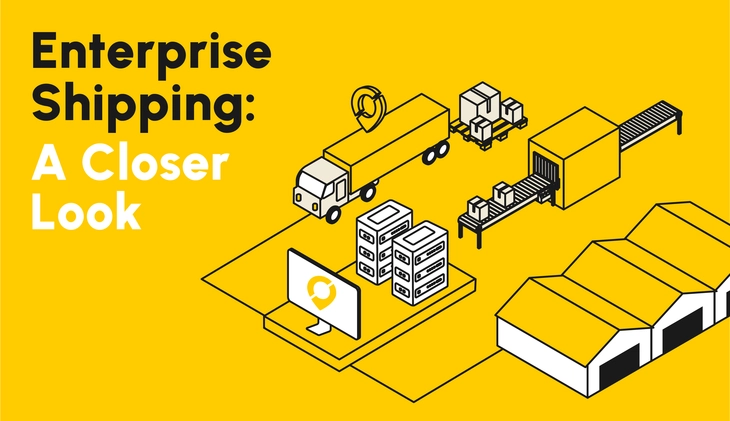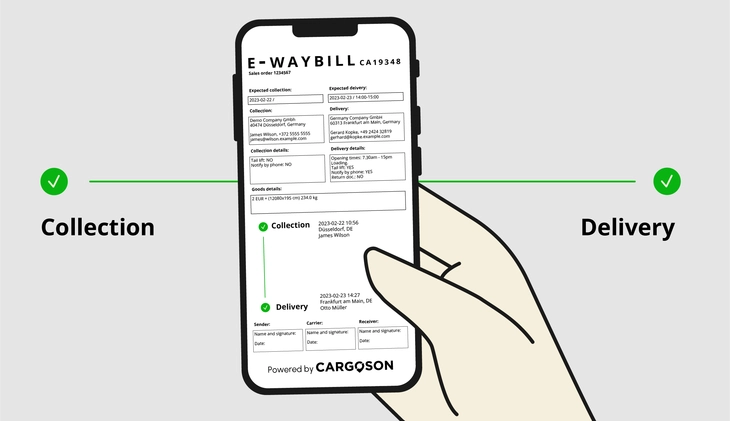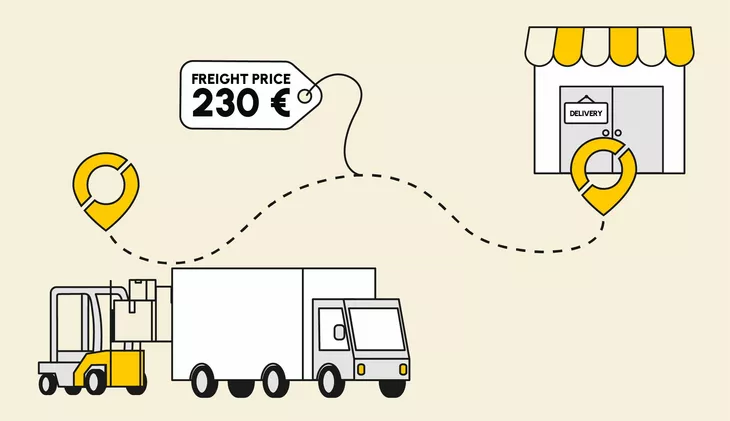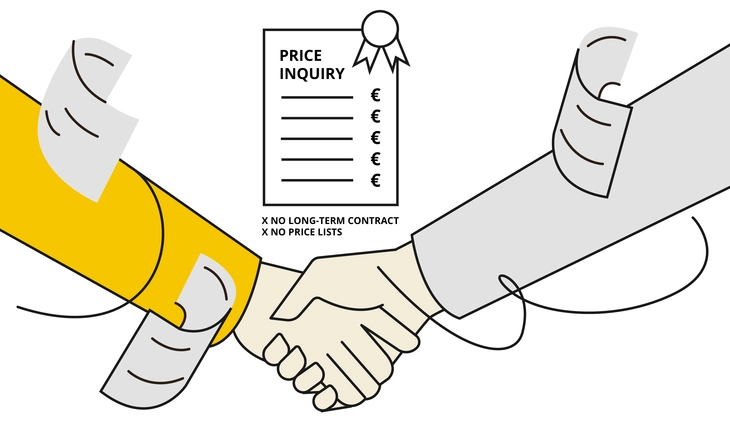In an era where efficiency is key, businesses are constantly looking for ways to simplify and optimize operations and reduce costs. One solution that has gained traction in recent years is the adoption of Transport Management Software (TMS) for manufacturing, retail, wholesale, e-commerce or construction companies. A TMS can significantly improve the way companies manage their logistics and shipping processes. We have implemented a TMS for hundreds of businesses and learned along the way how to make it as quick, efficient and affordable as possible. Here's a step-by-step, best practice path to implementing a TMS for your business:
1. Demo: A Practical Introduction
Before diving into the world of TMS, it's essential to understand its features and how it functions. Many TMS providers offer demos, providing a hands-on experience of the software. This interactive introduction allows businesses to:
- Visualize the user interface.
- Understand the workflow of transportation processes.
- Recognize the potential benefits
- Understanding of the price and returns on investment.
Book a FREE Cargoson TMS Demo from here ⬇️
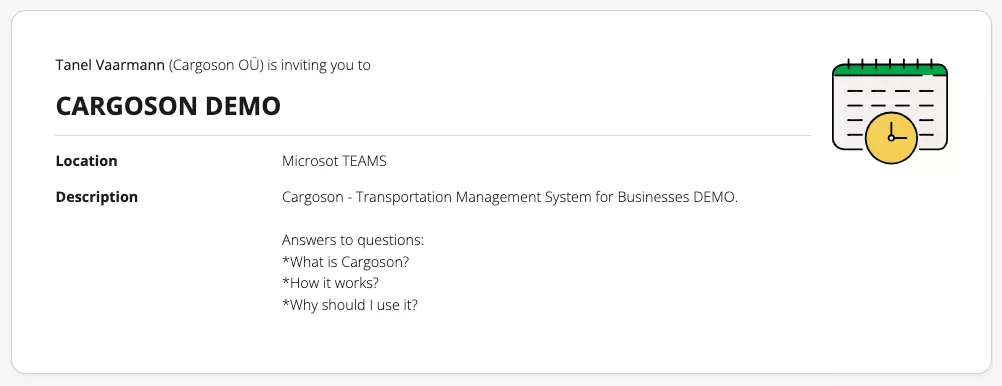
2. Information Gathering
The heart of any TMS system lies in its data. To effectively set up the software, businesses need to gather comprehensive data on:
- Users: Who will access the software? This includes names, roles, and contact details.
- Carriers and Freight Forwarders: Details and contacts about the transportation providers you work with.
- Pricelists: Information on costs associated with each carrier.
- Addresses: A detailed address book of all clients, warehouses, and suppliers.
- API Documentations: For integration with existing ERP or eCommerce systems.
3. Setting Up the Account
Once all necessary information is on hand, the next step is to set up the TMS account:
- Legal Entity: Input company details like name and address.
- Users: Create user accounts, assign roles, and set permissions.
- Carrier/Freight Forwarders Integrations: Link the TMS to your carriers or freight forwarders e-environments or set-up corresponding e-mails & dedicated contacts.
- Pricelist & Transit Time Upload: Import or input transportation costs and expected delivery times.
- Address Book Upload: Populate the TMS with frequently used addresses.
- Integration with ERP System or eCommerce: Connect the TMS to your existing systems for seamless data flow.
4. GoLive Session
Before fully transitioning to the TMS, it's essential to conduct a GoLive session. This entails:
- A detailed walkthrough of the software, either online or on-premises.
- Practical training for all users.
- Test price, transit time & CO2 calculations.
- Making test bookings with live data to ensure the system's accuracy.
- Document printing, including labels, e-waybills, declarations, CMR, and more.
- A Q&A session to address any concerns or clarifications.
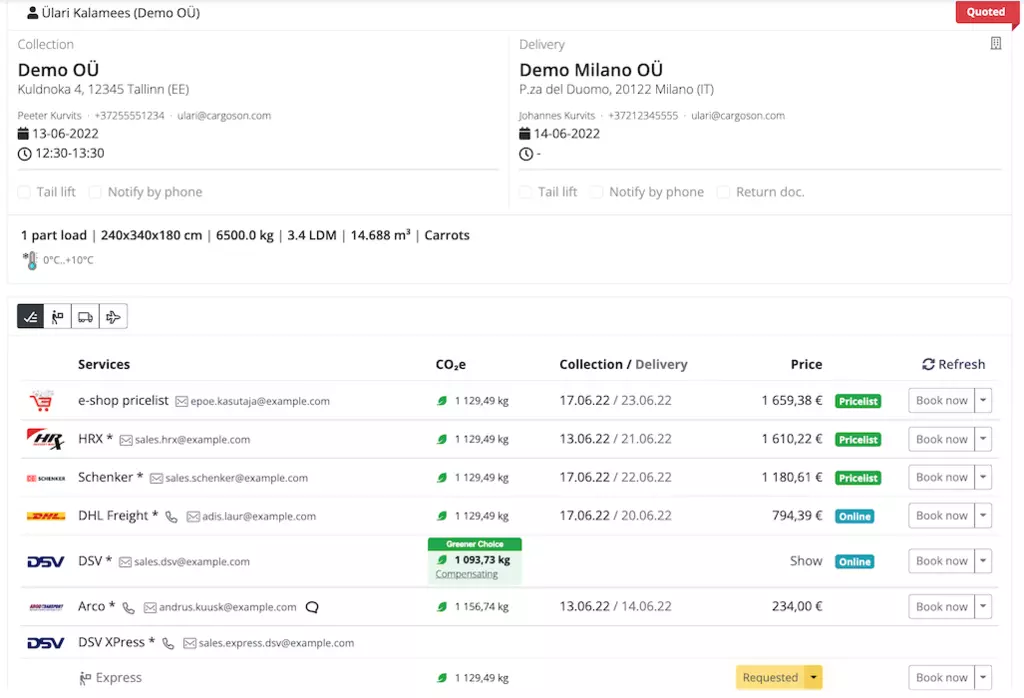
5. Usage: Support-Driven Approach
The first few weeks post-implementation can be daunting. Hence, a support-driven approach is crucial. Many TMS providers offer:
- Dedicated support teams to assist users in their initial phase and rest of the using period.
- Detailed video tutorial guidance and FAQ documentation.
- Feedback sessions to understand any challenges faced by users and offer solutions.
By following these steps, businesses can smoothly transition to Transport Management Software, reaping the myriad benefits it offers. With reduced costs, improved efficiency, and enhanced visibility into the transportation process, a TMS can be a game-changer for companies looking to elevate their logistics game.
Insights from implementing Cargoson TMS for Businesses. 💡
Cargoson offers practical online demos in TEAMS, Google Meet, Zoom or other online meeting platforms but will also offer in person and on premises demos when such need.
Normally, the demo itself takes about 30 minutes, but the Q&A section is what prolongs this into hands on meeting, as each business has something unique in their process of how they manage their logisitcs. But there are also common and repetitive questions from different customers during a demo.
Normally, the demo itself takes about 30 minutes, but the Q&A section is what prolongs this into hands on meeting, as each business has something unique in their process of how they manage their logisitcs. But there are also common and repetitive questions from different customers during a demo.
🚨 Here are the TOP 10 questions asked during the Cargoson TMS demo, along with their answers:
-
How much does Cargoson TMS cost?
Cargoson pricing consists of one time software account set-up fee + fixed monthly payment depending on the functionalities, number of users and number of monthly shipments.
Here are also some standard packages:
Retail: from 199€ per month
Industry: from 299€ per month
Corporation: from 499€ per month
Custom: You need to ask for the price as they will set up a custom solution based on your company's needs.
More detailed info from Cargoson pricing
-
Are the prices and transit times in Cargoson mine, or does Cargoson provide the rates?
You are in control of the carriers and forwarders you want to work with. If you have permanent agreements and price lists with some or all transport partners, these price lists can be uploaded to Cargoson software. Once the price lists have been uploaded, the corresponding transport rates & transit times will be displayed correctly after a new shipment has been entered.
-
Who is responsible for uploading the price lists?
You (Cargo owner), as the user, are responsible for uploading the price lists. You can upload price list files (excel, pdf, word, etc.) and Cargoson will set them up for your account. The carrier can add the pricelist for your account as well, but you'll need to ask them first.
-
How does Cargoson manage additional freight surcharges such as fuel surcharge, labour cost, and road tax?
Cargoson will keep up all the additional carrier surcharges that are publicly available to follow either from carrier websites or carrier will send the info about these surcharge changes to Cargoson support e-mail.
-
Do you also integrate with my carrier?
Yes, Cargoson allows you to add all your current and future carriers to your transport management software account. Cargoson offers integration for carriers that have their own e-environments, allowing you to link them to your Cargoson software account to send transport orders directly to your transport partner's system.
If carrier does not have their own e-environments and they accepts bookings via e-mail then this will also be set-up in your Cargoson account allowing you to still book all your transports to all of your carriers in your Cargoson Freight Management Software account. 1,000+ carriers are already connected to Cargoson. Here is a list of carriers that have active Cargoson accounts and are currently using the software.
-
Are the carriers happy to use Cargoson?
Initially, carriers might be hesitant to use Cargoson due to the increased transparency it provides to their customers. However, once a customer opts for Cargoson, carriers come on board. Seeing the benefits of Cargoson TMS through the eyes of the customer makes it more acceptable to them. To support this, here are some customer stories and reviews.
-
Do carriers also need to pay for Cargoson TMS?
No, Cargoson is free of charge for carriers and freight forwarders! Yet they all have their own accounts where they can manage requests, bookings, freight statuses, freight documents, and more. The entities that pay for Cargoson are cargo owners, which include sectors like manufacturing, wholesale, retail, construction, and larger e-commerce companies.
-
How long does it take to set up Cargoson account for my company?
The setup time for Cargoson varies based on several factors, including the number of carrier integrations, ERP integrations, and price lists. However, if all the necessary information is provided accurately and the carrier integrations are already established, it typically takes 1-2 weeks.
-
What is covered in the Cargoson GoLive session before using the TMS?
We'll guide you through the software, test out real data, print essential documents, and wrap up with a Q&A. Depending on the number of users, it usually takes 2-3 hours to get a full understanding and cover all potential questions. By the end, you'll be confident and ready to roll!
-
How does Cargoson support users during the initial weeks after implementation?
Cargoson places a strong emphasis on hands-on support to ensure users transition smoothly. Our dedicated operational team is always at the ready to assist and guide users through any challenges they might face. To make this even more seamless, we offer chatbot, e-mail, and direct phone support. Moreover, we genuinely value user feedback. It's not just about listening; we actively incorporate this feedback into our future developments. We're truly thankful to our users for helping us evolve and better our system.


